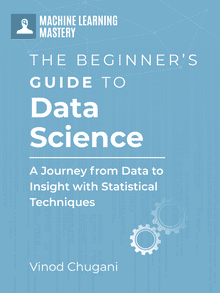Feature engineering and model training form the core of transforming raw data into predictive power, bridging initial exploration and final insights. This guide explores techniques for identifying important variables, creating new features, and selecting appropriate algorithms. We’ll also cover essential preprocessing techniques such as handling missing data and encoding categorical variables. These approaches apply to various applications, from forecasting trends to classifying data. By honing these skills, you’ll enhance your data science projects and unlock valuable insights from your data.
Let’s get started.

From Features to Performance: Crafting Robust Predictive Models
Photo by Wan San Yip. Some rights reserved.
Feature Selection and Engineering
Feature selection and engineering are critical steps that can significantly impact your model’s performance. These processes refine your dataset into the most valuable components for your project.
- Identifying important features: Not all features in your dataset will be equally useful for your model. Techniques like correlation analysis, mutual information, and feature importance from tree-based models can help identify the most relevant features. Our post “The Strategic Use of Sequential Feature Selector for Housing Price Predictions” provides a guide on how to identify the most predictive numeric feature from a dataset. It also demonstrates an example of feature engineering and how fusing two features can sometimes lead to a better single predictor.
- Applying the signal-to-noise ratio mindset: Focus on features that give you strong predictive signal while minimizing noise. Too many irrelevant features can lead to overfitting, where your model performs well on training data but poorly on new, unseen data. Our guide on “The Search for the Sweet Spot in a Linear Regression” can help you find an efficient combination of features that provide strong predictive signals. More is not always better because introducing irrelevant features to the model may confuse the model and therefore, the model may require more data before it can confirm the feature is not helpful.
- Dealing with multicollinearity: When features are highly correlated, it can cause problems for some models. Techniques like VIF (Variance Inflation Factor) can help identify and address multicollinearity. For more on this, see our post “Detecting and Overcoming Perfect Multicollinearity in Large Datasets“.
Preparing Data for Model Training
Before training your model, you need to prepare your data properly:
- Scaling and normalization: Many models perform better when features are on a similar scale, as this prevents certain variables from disproportionately influencing the results. Techniques like StandardScaler or MinMaxScaler can be used for this purpose. We cover this in depth in “Scaling to Success: Implementing and Optimizing Penalized Models“.
- Imputing missing data: If you have missing data, you’ll need to decide how to handle it. Options include imputation (filling in missing values) or using models that can handle missing data directly. Our post “Filling the Gaps: A Comparative Guide to Imputation Techniques in Machine Learning” provides guidance on this topic.
- Handling categorical variables: Categorical variables often need to be encoded before they can be used in many models. One common technique is one-hot encoding, which we explored in “One Hot Encoding: Understanding the ‘Hot’ in Data“. If our categories have a meaningful order, we can also study the use of ordinal encoding, which we highlight in this post.
Choosing Your Model
The choice of model depends on your problem type and data characteristics:
- Linear regression basics: For simple relationships between features and target variables, linear regression can be a good starting point.
- Advanced regression techniques: For more complex relationships, you might consider polynomial regression or other non-linear models. See “Capturing Curves: Advanced Modeling with Polynomial Regression” for more details.
- Tree-based models: Decision trees and their ensemble variants can capture complex non-linear relationships and interactions between features. We explored these in “Branching Out: Exploring Tree-Based Models for Regression“.
- Ensemble methods: Ensemble techniques often enhance predictive performance by combining multiple models. Bagging methods like Random Forests can improve stability and reduce overfitting. “From Single Trees to Forests: Enhancing Real Estate Predictions with Ensembles” showcases the performance jump between a simple decision tree and Bagging. Boosting algorithms, particularly Gradient Boosting, can further improve accuracy. Our post “Boosting Over Bagging: Enhancing Predictive Accuracy with Gradient Boosting Regressors” illustrates one scenario where boosting techniques outperform bagging.
Evaluating Model Performance
Once your model is trained, it’s crucial to evaluate its performance rigorously:
- Train-test splits and cross-validation: To properly evaluate your model, you need to test it on data it hasn’t seen during training. This is typically done through train-test splits or cross-validation. We explored this in “From Train-Test to Cross-Validation: Advancing Your Model’s Evaluation“. K-fold cross-validation can provide a more robust estimate of model performance than a single train-test split.
- Key performance metrics: Selecting appropriate metrics is essential for accurately assessing your model’s performance. The choice of metrics depends on whether you’re addressing a regression or classification problem. For regression problems, common metrics include Mean Squared Error (MSE), Root Mean Squared Error (RMSE), Mean Absolute Error (MAE), and R-squared (R²). For classification problems, frequently used metrics include Accuracy, Precision, Recall, F1-score, and ROC AUC.
- Learning curves: Plotting training and validation scores against training set size can help diagnose overfitting or underfitting. These curves show how model performance changes as you increase the amount of training data. If the training score is much higher than the validation score, especially with more data, it suggests overfitting. Conversely, if both scores are low and close together, it may indicate underfitting. Learning curves help diagnose whether your model is overfitting, underfitting, or would benefit from more data.
Conclusion
The process of feature selection, data preparation, model training, and evaluation is at the core of any data science project. By following these steps and leveraging the techniques we’ve discussed, you’ll be well on your way to building effective and insightful models.
Remember, the journey from features to performance is often iterative. Don’t hesitate to revisit earlier steps, refine your approach, and experiment with different techniques as you work towards optimal model performance. With practice and persistence, you’ll develop the skills to extract meaningful insights from complex datasets, driving data-informed decisions across a wide range of applications.




